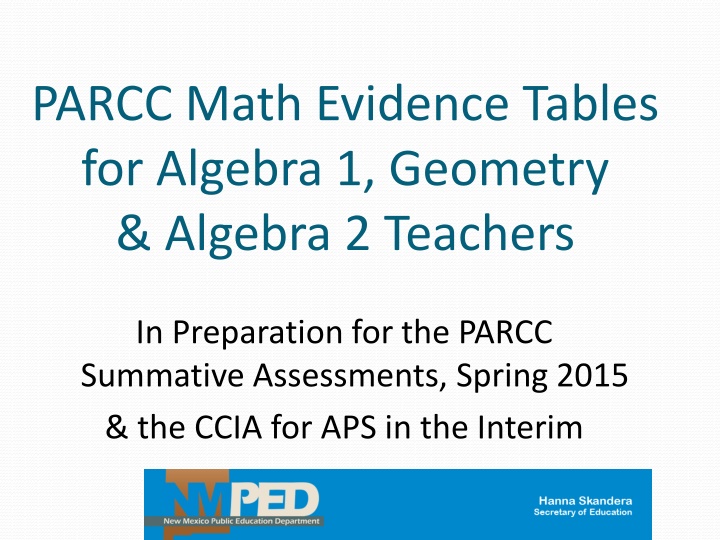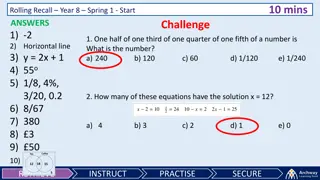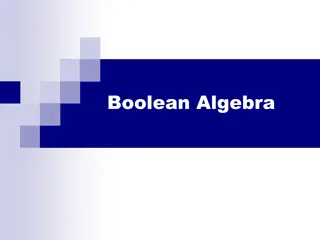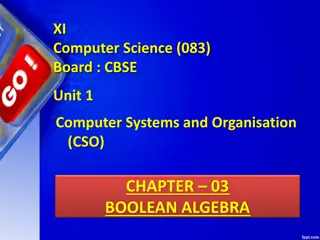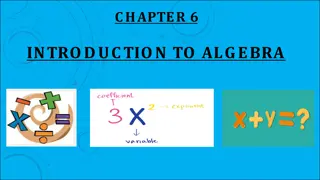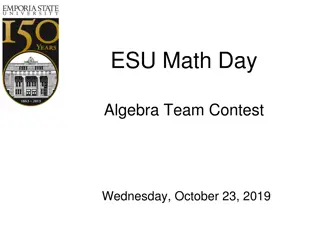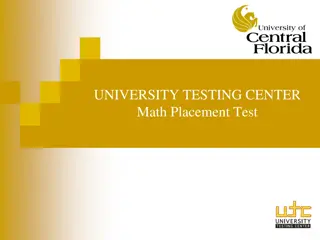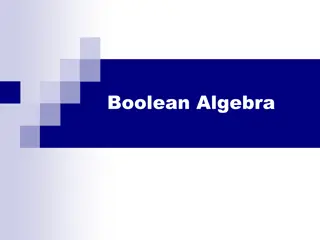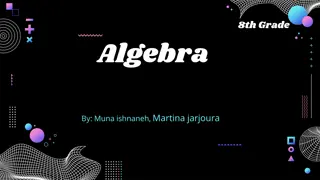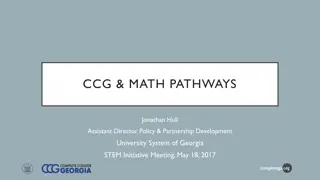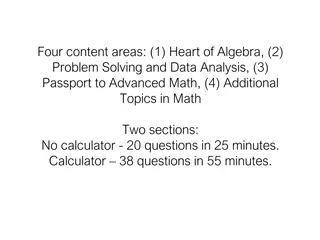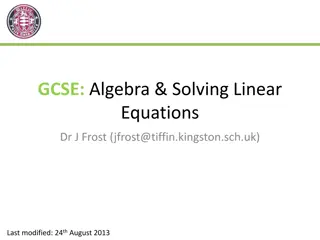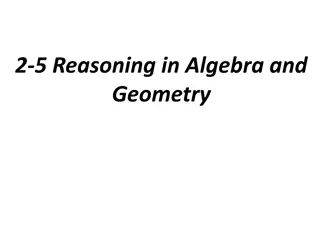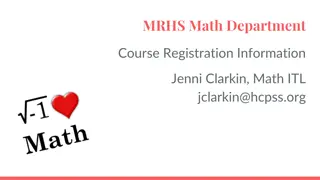PARCC Math Evidence Tables for Algebra 1 & Geometry
PARCC Math Evidence Tables for Algebra 1, Geometry, and Algebra 2 provide teachers with key insights and preparations for the PARCC Summative Assessments. Explore evidence-centered design and assessment strategies to enhance student learning and achievement in mathematics.
Download Presentation

Please find below an Image/Link to download the presentation.
The content on the website is provided AS IS for your information and personal use only. It may not be sold, licensed, or shared on other websites without obtaining consent from the author.If you encounter any issues during the download, it is possible that the publisher has removed the file from their server.
You are allowed to download the files provided on this website for personal or commercial use, subject to the condition that they are used lawfully. All files are the property of their respective owners.
The content on the website is provided AS IS for your information and personal use only. It may not be sold, licensed, or shared on other websites without obtaining consent from the author.
E N D
Presentation Transcript
PARCC Math Evidence Tables for Algebra 1, Geometry & Algebra 2 Teachers In Preparation for the PARCC Summative Assessments, Spring 2015 & the CCIA for APS in the Interim
PollEverywhere.Com At this time, what is your greatest concern in teaching the CCSS?
Todays Learning Outcomes Basics of CCSS PARCC assessment design How to read the PARCC CCSS evidence tables Evidence Statements to clarify CCSS Connections to Unit 2 Scope and Sequence PLD s interpreting in light of PBA s
Assessment Design English Language Arts/Literacy and Mathematics, Grades 3-11 75% 90% 2 Optional Assessments/Flexible Administration Performance- Based Assessment (PBA) Extended tasks Applications of concepts and skills Required Mid-Year Assessment Performance-based Emphasis on hard- to-measure standards Potentially summative Diagnostic Assessment Early indicator of student knowledge and skills to inform instruction, supports, and PD Non-summative End-of-Year Assessment Innovative, computer-based items Required Speaking And Listening Assessment Locally scored Non-summative, required
Evidence-Centered Design (ECD) and PARCC Claims Evidence Task Models Design begins with the inferences (claims) we want to make about students In order to support claims, we must gather evidence Tasks are designed to elicit specific evidence from students in support of claims ECD is a deliberate and systematic approach to assessment development that will help to establish the validityof the assessments, increase the comparability of year-to year results, and increase efficiencies/reduce costs.
Teaching to the Test vs. A Test Worth Teaching To Backwards Planning (UBD) PARCC s Evidence Centered-Design (ECD) Evidence-Centered Design in the Classroom What Enduring Understanding? What Claims? What is Acceptable Evidence? What Evidence supports the claim? Which Learning Experiences & What Instruction? Which Tasks points to the Evidence?
Claims Driving Design: Mathematics Master Claim: Students are on-track or ready for college and careers Students solve problems involving the major content for their grade level with connections to practices A Students solve problems involving the additional and supporting content for their grade level with connections to practices B Students express mathematical reasoning by constructing mathematical arguments and critiques (SMP 3 & 6) C ~37 pts (3-8), ~42 pts (HS) 14 pts (3-8), 14 pts (HS) 4 pts (Alg II/Math 3 CCR) ~14 pts (3-8), ~23 pts (HS) Student demonstrate fluency in areas set forth in the Standards for Content in grades 3-6 Students solve real world problems engaging particularly in the modeling practice (SMP4) D 6 pts (Alg II/Math 3 Total Exam Score Points: 82 (Grades 3-8), 97 or 107(HS) 12 pts (3-8), 18 pts (HS) E 7-9 pts (3-6) CCR)
Overview of Task Types Overview of Task Types The PARCC assessments for mathematics will involve three primary types of tasks: Type I, II, and III. Each task type is described on the basis of several factors, principally the purpose of the task in generating evidence for certain sub claims. 8 Source: Appendix D of the PARCC Task Development ITN on page 17
Overview of PARCC Mathematics Overview of PARCC Mathematics Task Types Task Types Task Type Description of Task Type Balance of conceptual understanding, fluency, and application Can involve any or all mathematical practice standards Machine scorable including innovative, computer-based formats Will appear on the End of Year and Performance Based Assessment components Sub-claims A, B and E I. Tasks assessing concepts, skills and procedures Each task calls for written arguments / justifications, critique of reasoning, or precision in mathematical statements (MP.3, 6). Can involve other mathematical practice standards May include a mix of machine scored and hand scored responses Included on the Performance Based Assessment component Sub-claim C II. Tasks assessing expressing mathematical reasoning Each task calls for modeling/application in a real-world context or scenario (MP.4) Can involve other mathematical practice standards May include a mix of machine scored and hand scored responses Included on the Performance Based Assessment component Sub-claim D III. Tasks assessing modeling / applications
Design of PARCC Math Summative Design of PARCC Math Summative Assessments Assessments Performance Based Assessment (PBA) Type I items (Machine-scorable) Type II items (Mathematical Reasoning/Hand-Scored the PLD s will inform final scoring rubrics) Type III items (Mathematical Modeling/Hand-Scored and/or Machine-scored the PLD s will inform final scoring rubrics) End-of-Year Assessment (EOY) Type I items only (All Machine-scorable)
Q: What is a Math Evidence Table and what purpose do they serve? A: Evidence statements are the connectors between the claims and the tasks. They describe the knowledge and skills that an assessment item or task elicits from students.
Evidence Statement Tables: Types of Evidence Statements Several types of evidence statements are being used to describe what a task should be assessing, including: 1. Those using exact standards language 2. Those transparently derived from exact standards language, e.g., by splitting a content standard 3. Integrative evidence statements that express plausible direct implications of the standards without going beyond the standards to create new requirements 4. Sub-claim C & D evidence statements, which put SMP #3, #4, and #6 as primary with connections to content
Log onto . . . parcconline.org Open tab at top: The Parcc Assessment Click on Left side: Parcc Assessment Design Then click on: Assessment Blueprints and . . .
1. Open the two documents for one content area 2.Take 5 minutes to look through both of these documents for one content area 3.After 5 minutes of independent research, you will be directed to do a pair share of what you noticed for another 10 minutes 4.Then, we will look at these documents with respect to Unit 2 of our Units of Study for Alg 1, Geom & Alg 2
Looking at Unit 2: the CCSS s + Evidence Tables + SMP s + Calculator
Some Instructional Uses of the Evidence Tables To see ways to combine standards naturally when designing instructional tasks To determine and create instructional scaffolding (to think through which individual, simpler skills can be taught first to build to more complex skills) To develop rubrics and scoring tools for instructional tasks To see how the content and the mathematical practices go hand-in- hand and should not be thought of as separate standards To use as a tool to guide questions for classroom tests and assessments 16
PARCC Calculator Policy Grades 3 5 NO Calculators Allowed * Grades 6 7 Online four function calculator with square root Accessible for about 50% of the assessment Grade 8 Online scientific calculator Accessible for about 50% of the assessment High School Online calculator with functionalities similar to that of a TI-84 graphing calculator Accessible for more than 80% of the assessment For all grades: Assessments are to be divided into calculator and non- calculator sessions, provided that the other sessions of the assessment are locked. NOTE: There is continuing discussion on whether to allow students to use a real vs on-line calculator in 2015 (*) For students who need accommodation, calculators will be allowed for even non-calculator portions of the assessment, excluding fluency
Reference Sheets for the Assessment PARCC has approved the following reference sheets that students can use during testing. These reference sheets include the necessary formulas and reference information students need to assist them in answering certain mathematics questions
CCSSM Exemplar Assessment Prototypes PARCC http://www.parcconline.org/samples/item-task-prototypes Illustrative Mathematics (IM) www.illustrativemathematics.org Mathematics Assessment Resources Service (MARS) http://map.mathshell.org/materials/lessons.php New York City Dept of Education (NYC) http://schools.nyc.gov/Academics/CommonCoreLibrary/CommonCoreC lassroom/Mathematics/default.htm 23
Next Steps What do you still want to learn? What questions do you have? Write these on post-it notes, and place on the parking lot as you leave Thank you for attending today! Ronda Davis; davis_r@aps.edu
